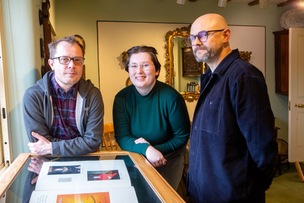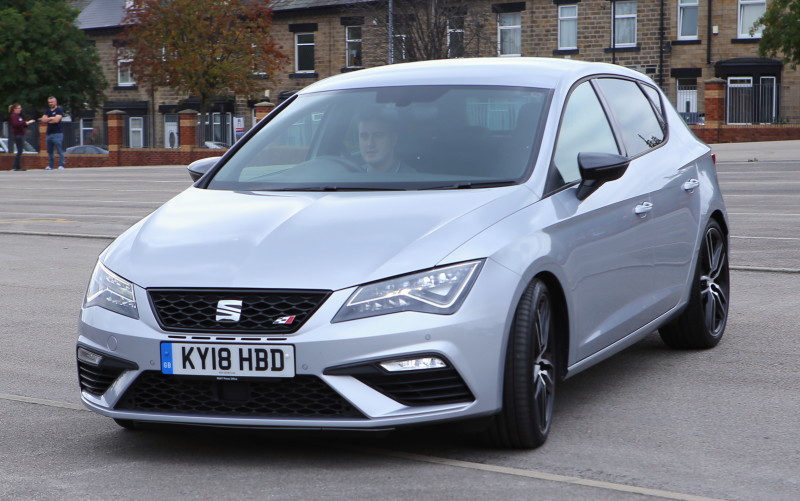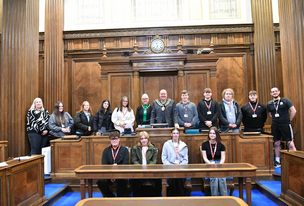PRESS release hyperbole can be tiring to read when it lands in your inbox - a roll of the eyes and a swift hover over the delete button is usually what happens.
Fair enough, manufacturers have to do it, but if anything it has the opposite effect of what it’s trying to do - impress its recipient - and makes me worry even more for new cars which appear to be relying on its pointless Nurburgring lap as a selling point.
The hot hatch market is one of the most competitive sectors in the motoring world as there are six or seven truly great cars which are everything to everyone and cars for £30,000 have the broad abilities to bloody the noses of sports cars worth twice as much.
Remember that incredible footage on BBC’s Planet Earth II of newly-hatched iguanas attempting to run to safety away from racer snakes? It’s a bit like that when a new hot hatch is released. It arrives and Civic Type Rs, Megane 280s and an array of pumped-up Golfs are there chomping at its heels, gunning for a magazine test in the hope of putting the new kid on the block to the sword.
Seat’s Leon Cupra is a little different, because it goes into battle armed ready to win a game of Top Trumps thanks to its 2.0-litre turbocharged engine and lashings of in-gear grunt. We’ll come to that later, as its looks divided opinion during my time with it.
Seat, a marque known for its subtle styling, has again gone conservative with its Leon Cupra and there are only a few sportier additions that set it apart from its lesser-powered FR-badged sibling. If you debadged the front, which has a small chequered flag motif on the front grille, you’d be hard pushed to tell the difference and the rear is arguably even more subtle - people who don’t know about cars would never guess the power of the Cupra’s punch.
I like my hot hatch styling to be loud, bold and very much look-at-me so the Cupra shouldn’t be up my street, but there’s something rather appealing about driving a wolf in sheep’s clothing so I grew to enjoy it. However, the introverted styling which will be loved by some and disliked by as many others for not shouting about what it is cannot be trusted as the pace of this prim-and-proper car is eye-opening to say the least.
Settle into its interior - well-made, a great driving position and a little uninspiring again - and start it up and your ears are met with a pleasing, typically turbocharged tone which immediately gives its game away. It’s familiar because its engine is the same as the 300bhp one fitted in the Audi S3 and VW Golf R - a good start given just how capable those two are.
But the Cupra isn’t four-wheel-drive like its sister cars and instead deploys each of its horses to the front wheels. I know, a recipe for disaster, or so you’d think. If a front-wheel-drive car had 300bhp 15 years ago, it’d be scrabbling for traction and a real handful in every weather condition. It’d try to pull you into a ditch with huge amounts of torque steer and it would be completely flawed, but in 2018 engineers’ considerable nous can counteract the drawbacks of asking so much of two 19-inch tyres.
Yes, it is a handful in the wet and is only able to put about 25 per cent of its power down in first gear, but traffic light GPs are reserved for 17-year-olds so it’s largely pointless anyway. Get it into second in the wet and it will sometimes show its displeasure by showing you a dancing orange light which signifies it’s struggling, but mostly it’s fine.
This first impression with its tractability isn’t great, I’ll admit it, and the S3 and Golf R would be a blip on the horizon thanks to their all-weather supremacy, but there’s a magic to the Cupra which makes it much more entertaining than the aforementioned duo, which are also considerably more expensive than the £32,000 Seat.
In the dry - to put it simply - it’s one of the most capable hot hatches I’ve ever driven. Its front end is sharp, it’s keen to tuck into a corner and the grip it generates is nothing short of phenomenal. Because it has two less wheels to power, the rear is more playful and you know where you are with its front tyres as the feedback through the steering is informative.
Four-wheel-drive cars have a tendency of feeling numb and disconnected when you’re pushing on but there’s not of that in the Cupra, so Seat’s decision to not follow suit and put its trust in the front wheels is actually a masterstroke.
Our test car, which has a six-speed manual, is an engaging mate for the punchy engine and is a joy to use. The brakes absorb a lot of punishment and the dreaded spongy pedal feel doesn’t show itself, something which you’re thankful for given just how fast the Cupra feels.
No-one could ever get bored of the way its engine pulls when it’s in third gear. There’s a small amount of turbo lag low down as is to be expected, but from that point on it pulls and fails to feel anything other than remarkable all the way to 7,000rpm.
If you’re after a subtle hot hatch which doesn’t draw bad attention to itself, the Leon Cupra is the best on the market.



























